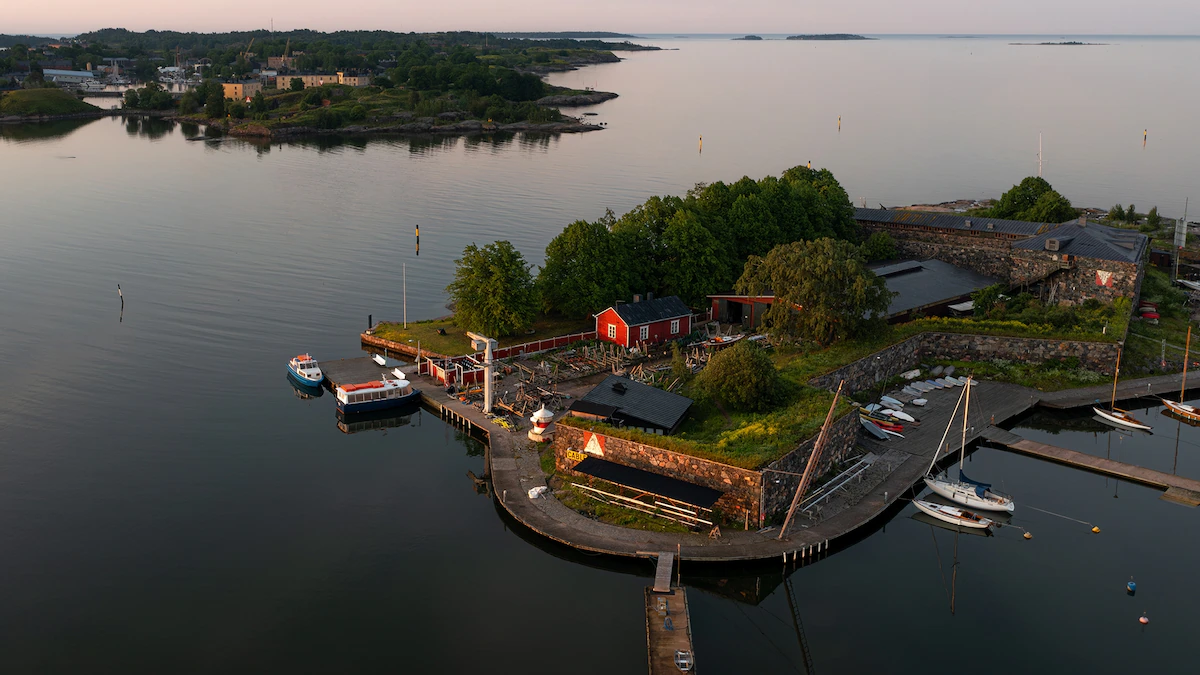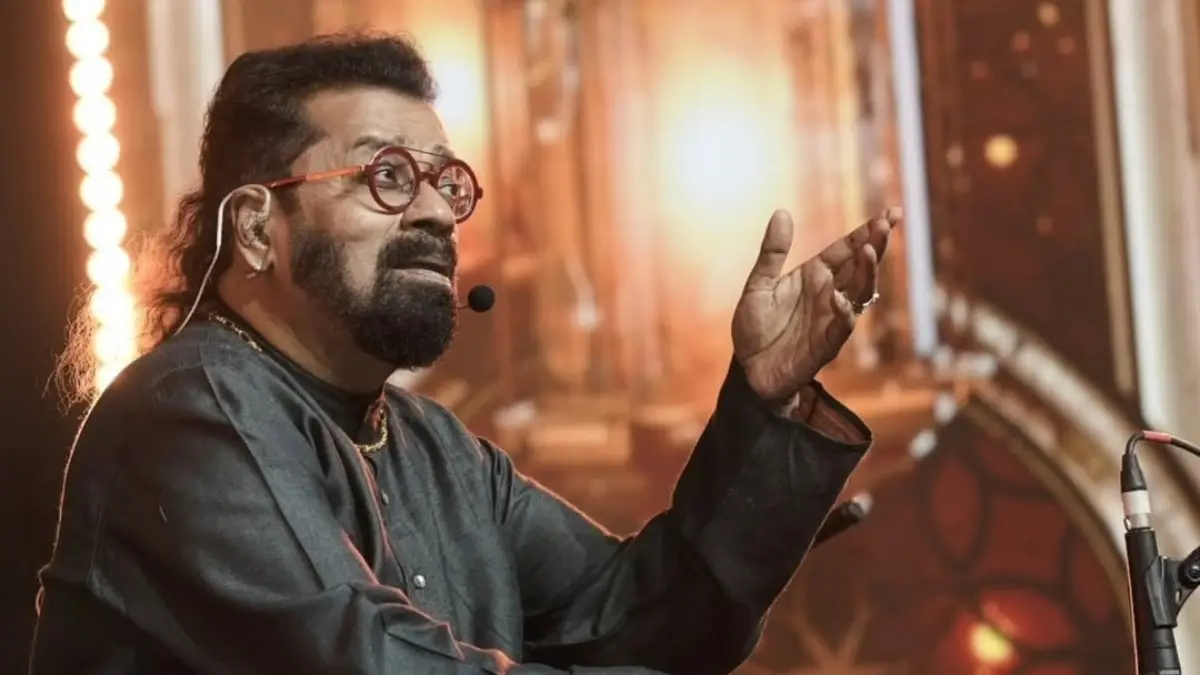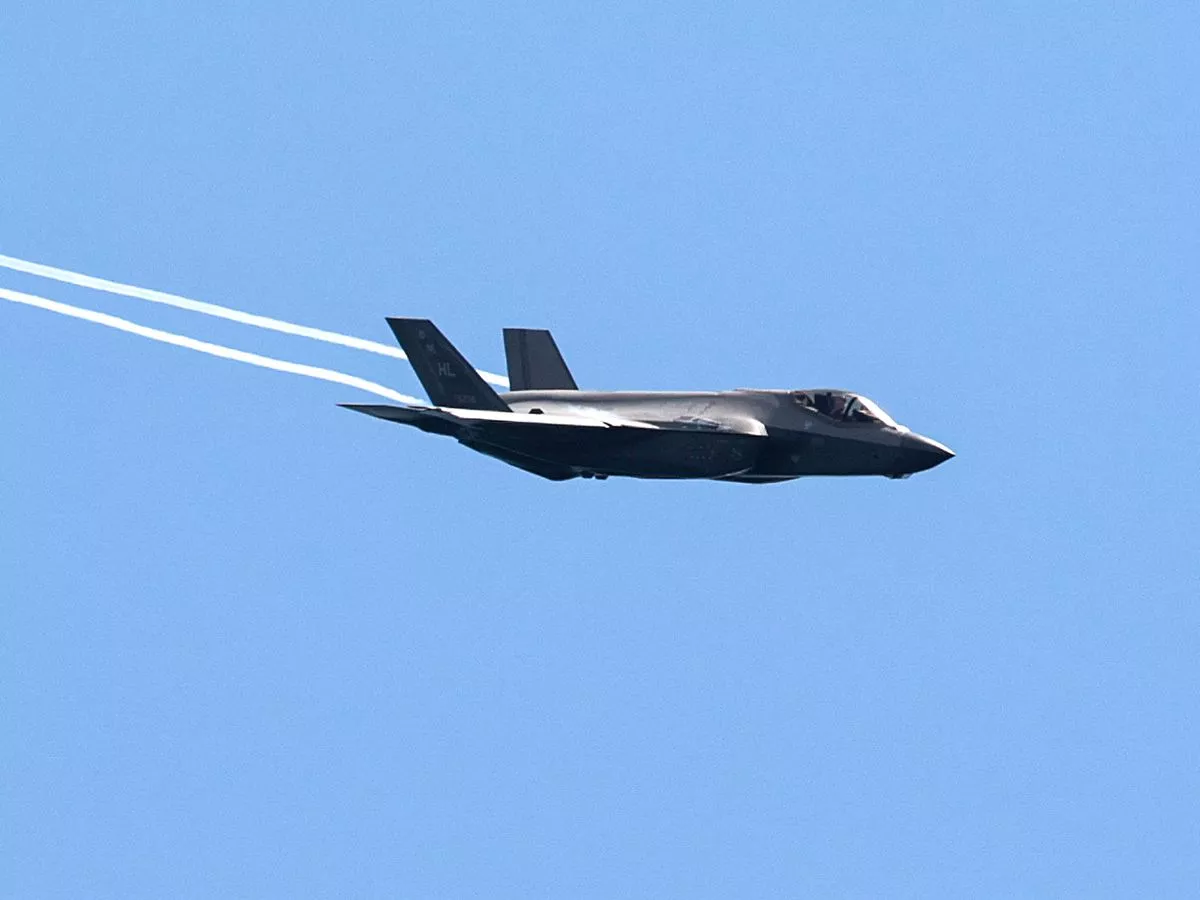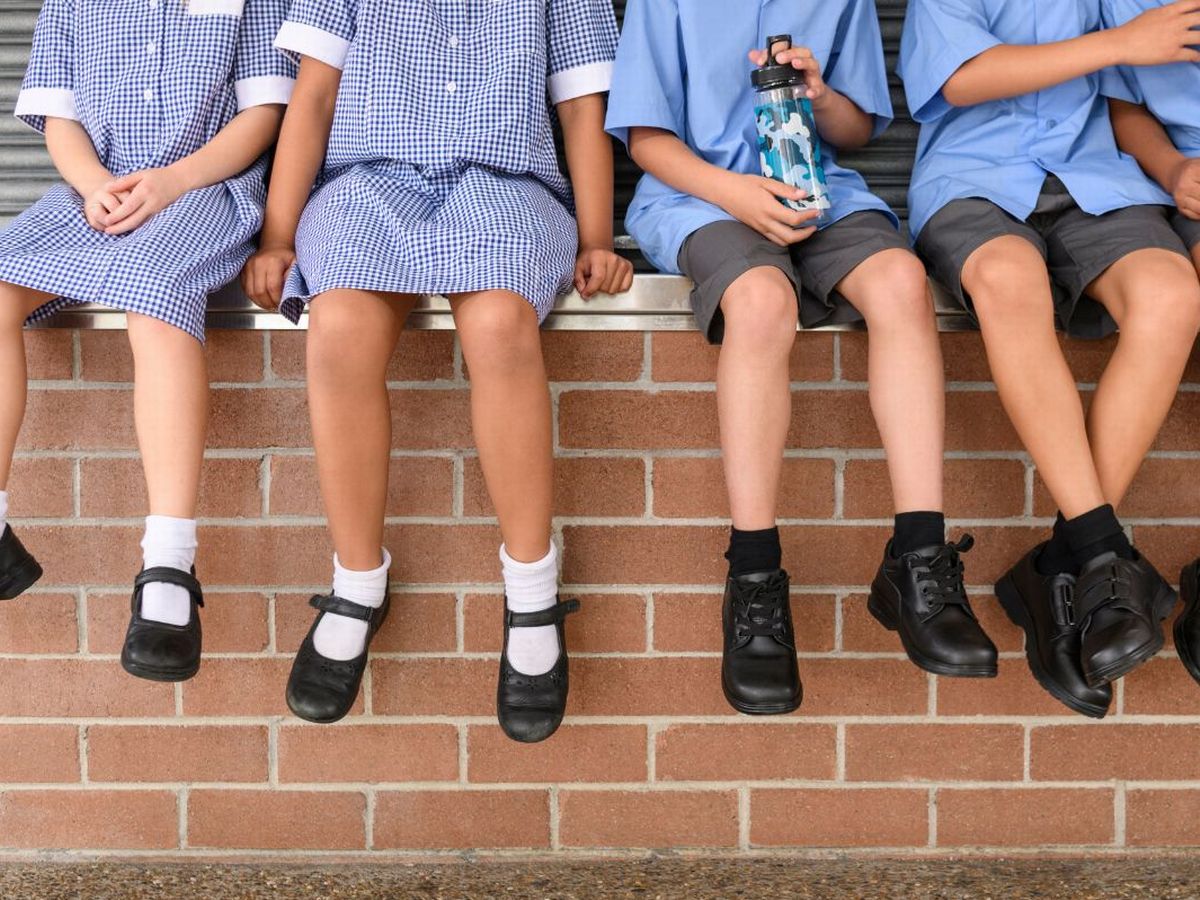
The view from the Ursa Observatory at Kaivopuisto park, on the southern tip of Helsinki, encapsulates the ruggedness of the Finnish capital. Beyond a wisp of beach, the Gulf of Finland stretches to the horizon, splashed with low-lying islands green with pines. As the evening light wanes, I reach for my phone and tap ‘play’, triggering a soundscape of flitting piano notes. I can’t perceive any particular melody, but there’s reason to their rhyme. Each is assigned to a historic lighthouse in the archipelago, matching their respective tempos as they flash on and off. The notes play together, then taper off, crescendo and dwindle, like a symphony of fireflies.
The sound installation, called ‘A Scene II’ and accessible via a dedicated web page, is the brainchild of Mark Niskanen and Jani-Matti Salo, local artists who work mainly outdoors to enhance our experience of nature. “This artwork emphasises human transience against the vastness of the sea,” Mark tells me later, as we sit under a sailcloth canopy on the waterfront terrace at Café Ursula, just downhill. “Nearly all maritime markers in the gulf operate on solar energy. If humanity were to disappear, these lights would continue to blink for over a decade.” In other destinations, Mark and Jani-Matti might be considered to be operating on the margins of the art world. But here, they’re simply Helsinkians, citizens of a place where nature seeps into every facet of life, especially creative life.
Locals here are used to being at the mercy of the elements. Helsinki is set on a peninsula surrounded by often tempestuous Baltic waters. At 60 degrees north, seasonal change is stark, with daylight hours stretching to 19 in summer and shrinking to six in winter. Instead of running from this exposure, locals lean into it. They revel in cold plunges, rejoice in the warmth of cedar-lined saunas and take inspiration from the wilderness around them. Having just been named the world’s most sustainable travel destination by the Global Destination Sustainability Index, the city’s the gold standard of living thoughtfully and resourcefully with nature.
Spreading out northward from the park, Helsinki has some of the loveliest and most varied architecture of anywhere I’ve seen. There are art deco mansion blocks scaled by bulbous gargoyles, colourful bow-fronted shops on brick-paved boulevards and heritage palaces lining the central port. There are around 60 public saunas dotted around the coast and wider archipelago, many resembling sculptural temples, built with aromatic wood from native trees. The courtyard of the contemporary gallery Amox Rex, with huge eye-like windows peering into subterranean rooms, looks like an alien landscape. The central Oodi library, an undulating building of spruce and glass on the threshold of an inland bay, lends cross-country skis alongside its literature. Many waterfront rental homes come with the use of a canoe or sailing boat.
Later that evening, I stop in at Toppa cocktail bar, 30 minutes’ walk north east of Kaivopuisto. It’s perched atop the Sugar Cube, a white, port-side office building designed by 19th-century architectural legend Alvar Aalto. Despite having to wear winter scarves to brave the brisk breeze, most guests have moved out onto the terrace. I join them, peering down onto the shore below to watch friends splashing in two Olympic-size pools jutting into the port. Around the corner, a couple pulls an inflatable kayak into the bay. This hardy outdoorsiness — the Finnish call it ‘sisu’ — helps explain why Helsinki wears its creativity on its sleeve, exhibiting much of its art on the outside.
The next day, I head out to experience more of it on Vallisaari island, an 18th-century former military outpost, on one of the city’s small, wood-lined ferries, part of a vast sea-shuttle network. I arrive at a green sanctuary, alive with birdsong. “It’s like an outdoor gallery,” says art historian Kati Kivinen, who runs exhibitions for the Helsinki Art Museum, located in a former tennis club in the city centre. “But then, so is much of our waterfront.”
Kati’s in the process of curating the Helsinki Biennial and, this year, she’s invited artists to showcase their work among Vallisaari’s vine-coated barracks, which have been nearly swallowed whole by birch and beech forest. “At the museum, we’re always trying to look at art from a non-human, natural perspective,” Kati tells me as we stroll past a series of columns built from mycelium, a novel fungal material. “Our sea and islands are inseparable from the city and history. Dealing with climate change and loss of biodiversity — these topics are strongly present in contemporary art, and it’s in our character to approach them with positive solutions.”
I spend hours wandering the forest. I find art crafted from fallen trees. On one path, I’m asked to listen for recordings of worms emitted from speakers. There’s a giant blue insect hotel made from discarded industrial pipes, blown-glass flowers floating among eelgrass on a pond, and an old garrison sprouting wildflowers from its roof. Many of the pieces brought for the show will remain here for future visitors, or be left to slowly decompose into the ancient earth.
The art of living well
Helsinki has around 200 open-air art pieces, and more pop up regularly thanks to a new city mandate calling on developers to invest 1% of their budget in public art. Standing on the bow of the ferry back to port from Vallisaari, I can just about make out a new pavilion by Nordic artist Olafur Eliasson, made from giant illuminated poles planted in the rocky waterfront of Helsinki’s Kruunuvuorenranta district. Residents of a newly built community there got to vote on how to spend their 1%; they went for this radiant installation to see them through the long winter.
Many of these works are linked via an interactive map, available from the Helsinki Art Museum’s website. After we dock, I head in search of more, tugging a yellow city bike free from a kerb-side bank and joining the cycle path that rings the coast. I pass dog parks, marinas and the lion’s share of artworks. Dogs on leads gambol out to a wooded peninsula; a pleasure-boater tinkers with a mast. Here and there, construction barriers announce a batch of homes, a tram, a kindergarten, all mingling with modernist concrete apartments from the last century on swathes of city beach.
Soon, I reach Kalasatama, a pristine community in a former fishing port, where developer budgets have been spent on sculptures, many designed in dialogue with the earth and sea. Just off the waterfront path, I spot a mirror reflecting two parallel worlds: modern apartment blocks in one direction, glacial sea rock in the other. A steel kayak dangles off a freshly bricked facade; a squiggle of bubblegum-pink steel serves as a bench from which to watch joggers crossing a suspension bridge. It’s barely 5pm, and slowly the trickle of fellow cyclists is becoming a stream, padel racquets and gym shoes stuffed in their baskets — work-life balance is taken seriously here.
Turning back towards town, I watch the city begin to glow amber up ahead, the arched windows of grand art nouveau manors reflecting the late-day sun. The building catching my eye, though, is a tall, white smokestack in the foreground, branded with vertical neon letters: S-A-U-N-A. It’s stout and white, with a ladder nearby that descends into the frothing sea.
Beckoning from a lonely patch of grass like a scene from an Edward Hopper painting, it’s probably the fourth sauna I’ve passed this afternoon — with most Finns enjoying multiple sessions a week, the buildings are as common here as the lighthouses. But while other cyclists bypass me to pray at its altar of stone and birch, I take a photo and move on. I’ve come without a swimsuit, and I’m not quite ready to go Full Finn.
The next morning, I pack a bag for Lonna, another decommissioned military island, which is home to a sauna and very little else. “Sauna is a basic human right,” Kati had told me the day before when I’d asked about the sheer number of them. “It’s a time to commune with materials from the land.” She’d recommended Lonna to experience the Finnish speciality, citing the bucolic setting.
I hop aboard another wood-lined ferry for the transfer from the port and watch the domes of the hilltop senate building receding in our wake as the pine-clad islands come into view. The red roof of a country house peeks through a copse, with the hint of a lighthouse cupola further ahead; 10 minutes later, I climb onto Lonna’s rustic pier, the weather just blustery enough to make a steam bath seem a fine idea.
A few fellow passengers start walking up a dirt path to a red-brick former storehouse operating as an organic restaurant — named after the island — but I turn right at a bed of purple lupines and skirt the shore to a suite of cedar saunas shrouded by pines. Framed in a doorway like an oil painting, with the rocky seafront behind her, a young woman stoking the fire hands me a towel and shuts me into one of the narrow, wood-lined cabins.
I get changed in a small anteroom, step through and lay back on a bench, letting the warmth swaddle me like a weighted blanket. Inhaling the thick, cedar-scented air through my nose, listening to the lapping water outside, I feel like I’m outdoors. It’s barely noon and I’m the only person here; soon, I doze off, and when I open my eyes, I feel as loose and floppy as a baby.
With the return ferry still some time off, I emerge, squinting, into the midday light and wander around a thicket to a former arsenal, once occupied by the ruling Swedes. Moving along the wedge of beach to dip a toe in the bay, I pass a barnacle goose craning a long black neck over her goslings. All at once, she comes straight for me, flapping madly and snapping her beak at my forehead. Then, she plants herself in my path, daring me to carry on.
To avoid a bloody standoff, I creep backwards through a thatch of seagrass and hop across some stepping stones, shimmying back onto the pier like a fugitive. It’s just another day in Finland’s biggest city. And a reminder that living with nature doesn’t mean surmounting it; it inspires our stories, and we let it be.



